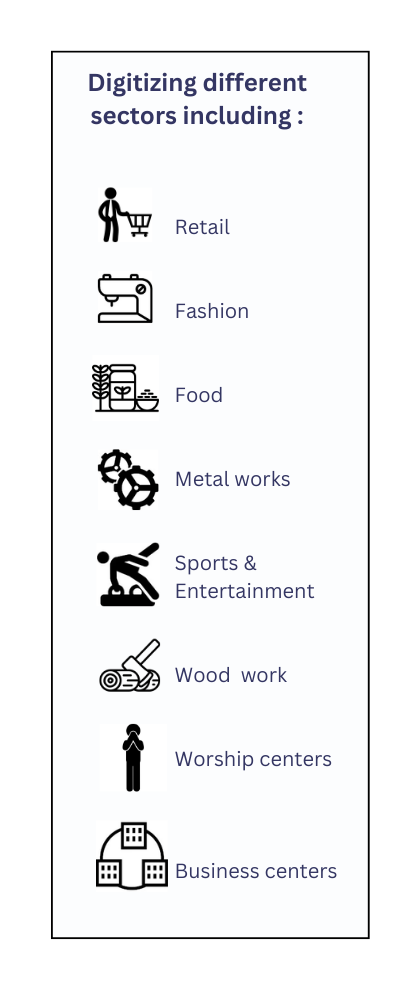
DIGITIZING BUSINESSES IN NIGERIA
Farmonaut® and LinxAg, two companies with expertise in digitization and spatial analysis, have joined forces to computerize businesses in Nigeria. The partnership aims to improve the efficiency and productivity of enterprises in various sectors, including agriculture, real estate, logistics and many more.
LinxAg, is a Nigerian firm that offers geospatial solutions to businesses. The company leverages geographic information systems (GIS) and remote sensing technologies to provide location-based insights and decision-making support. The partnership between Farmonaut® and LinxAg brings together their respective strengths and creates new opportunities for businesses in Nigeria. The joint venture aims to provide comprehensive solutions that integrate remote sensing, GIS, and AI-based analytics. By combining these technologies, the partnership can offer businesses a more complete view of their operations and help them identify areas for optimization.

HOW THIS TASK IS ACCOMPLISHED?
- Bizterrain APP
A mobile app and web application named “Bizterrain” has been created by LinxAg to serve both small and large businesses. Using the mobile application, the app can gather data such as:
- Boundaries of the business location
- Details of the shop
- Information about the owner
- Contact details
These data can be easily accessed by the users of the application. Furthermore, if any modifications occur, such as a change in the business’s location or other details, the information can be conveniently edited.
The mobile application is versatile and can perform all tasks, including data capture, access, and editing. On the other hand, the web application cannot capture data but can easily access and edit existing data.
The Bizterrain App
The application includes four main tabs, which are the Dashboard, Analytics, Report, and Profile sections.
Dashboard
The Dashboard is the main tab of the application, providing users with a bird’s eye view of their businesses. It displays essential information about the business, including the total number of registered businesses, registered users, and the total revenue generated.
Analytics
The Analytics tab provides businesses with valuable insights and data-driven analysis of their business activities. This tab includes detailed reports on various aspects of the business, such as sales, customers, inventory, and marketing campaigns.
Report
The Report tab allows users to generate customized reports based on their specific business needs. The reports can be tailored to include specific data fields, such as sales figures, customer demographics, or inventory data.
Profile
The user’s profile can be accessed on this page, allowing them to modify their password and update their information. This tab enables users to change their login credentials and submit their profile information.
This app can be deployed by:
Government:
- One of the primary use cases of Bizterrain by the Nigerian government is in the area of land administration.
- The application allows government officials to capture detailed information about land boundaries, ownership, and usage.
- This information can then be used to manage land ownership disputes and to facilitate the distribution of land to farmers and other stakeholders.
- By using Bizterrain, the government can improve its land management practices and ensure that land is used more efficiently.
- If the government decides to launch a program and establish eligibility criteria, the Bizterrain application can be utilized to identify individuals’ profiles and estimate the number of eligible individuals for the program. For instance, if the government plans to introduce a scheme for women, they can utilize the application to estimate the number of eligible women in a specific region.
Large Company Owners:
- Big corporations can reap significant advantages by utilizing the application as it enables them to engage with small business owners at a reasonable cost.
- For instance, if a prominent clothing brand wishes to collaborate with tailors in a specific region, they can easily acquire tailor contacts through the application and initiate local collaborations at reasonable prices.
- The filter feature of the application enhances user convenience by enabling them to find the necessary contacts effortlessly. Additionally, the map view displaying the location information is useful for storing excess inventory in warehouses located in different regions.
Small Business:
- Small businesses have the option to create their profiles on the application, which can provide them with opportunities to collaborate with prominent corporations.
- This collaboration can enable them to generate passive income at a better cost.












